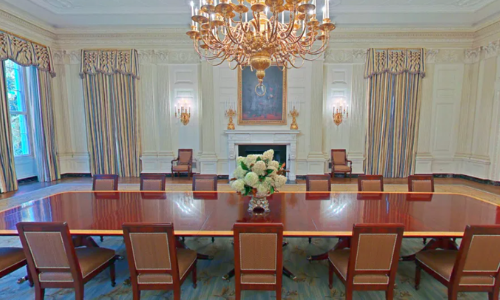
The Story of Heating and Cooling at 1600 Pennsylvania Avenue
Washington D.C. wasn't the most forgiving location for the Presidential home, but many presidents stuck out the hot summers and freezing winters for the prestige and prominence of the White House abode.
The White House became a more decadent and historically rich home through the years, and over time it became a more comfortable home, too, thanks to air conditioning and heating advances. Read on to discover the story of heating and cooling in America's house!
Cooling off the POTUS Outside
Washington D.C. is frequently referred to as "The Swamp," but the origin of the name isn't political. Washington D.C. literally sits on a swampy mudflat at the mouth of the Potomac River. Like every swamp, mosquitoes, humidity, and heat plague the summers of D.C.

Even the Leader of the Free World suffers the heat of D.C. summers. Many presidents have sought to escape the heat by traveling to the hills outside D.C. The Lincolns and Clevelands both had homes in the cooler suburbs. Some presidents couldn't avoid the heat due to their responsibilities and had to find other ways to survive. President Taft was known to escape the heat by sleeping on a screened-in porch on the White House roof during the summer and taking his work outdoors during the day.
President Wilson took the outdoor-work to a whole new level with President Theodore Roosevelt's assistance. Roosevelt had left behind a tent from his time in Panama, one equipped with both a phone, electrical lighting, and other comforts needed to keep the President working effectively. Wilson used the tent during the summer to keep cool in the Rose Garden and brought many dignitaries and politicians to meetings in the tent.
Scandalous & Cold Richard Nixon!
Wilson also first equipped the White House with air conditioning in 1909. The system was rudimentary at best, using electric fans in the White House's attic to blow cold air from vats of ice through the building. The system wasn't efficient and got quickly abandoned.
Modern air conditioning came to the White House in 1930, although only in the West Wing at first. President FDR saw the first installation of whole-house air conditioning in 1933. Since then, presidents have enjoyed the chilly benefits of A/C in the White House.
President Lyndon B. Johnson and Richard Nixon were well known for keeping the White House exceptionally cold. Johnson kept the White House cold enough in the summer to require an electric blanket at night, and Nixon kept the White House cold enough to use fireplaces even during the summer.
Partial Presidential Heat

The White House has 28 fireplaces that were once its primary heating source. For over a century, blazing fireplaces and constant firewood and tinder usage were the only way Presidents stayed warm during the cold winters on the Potomac.
It was not until 1840 that President Van Buren installed the first furnace-based heating system. The system consisted of a furnace and ductwork that heated the West Wing's staterooms and intersecting hallways. The remainder of the White House transferred from using fireplaces as the main heat source in 1845 when President Polk ordered that more ductwork and registers be installed to heat the remaining rooms. Over time, the White House has continued to evolve and use newer A/C and heating systems to keep up with the times.
About AAA Modern Air
Three generations have proudly operated AAA Modern Air for their Dania Beach, FL community. Since 1969, AAA Modern Air has strived to offer cost-effect solutions for their clients, from maintenance plans to up-front cost analysis. Their technicians are extensively trained and certified to handle any HVAC situation promptly, courteously, and efficiently. Homeowners can trust AAA Modern Air to take care of their HVAC emergencies with reliable, fast service. Contact them today to schedule AC services.
Distribution Links +
- wicz.com
- wdfxfox34.com
- ktvn.com
- wboc.com
- snntv.com
- rfdtv.com
- wfmj.com
- htv10.tv
- central.newschannelnebraska.com
- metro.newschannelnebraska.com
- southeast.newschannelnebraska.com
- midplains.newschannelnebraska.com
- northeast.newschannelnebraska.com
- plattevalley.newschannelnebraska.com
- panhandle.newschannelnebraska.com
- rivercountry.newschannelnebraska.com
- wrde.com
- wpgxfox28.com
- lifestyle.mykmlk.com
- wtnzfox43.com
- lifestyle.3wzfm.com




